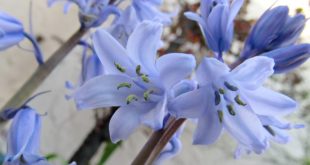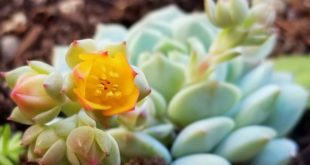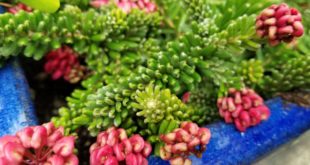Spring has totally sprung! Cold-season vegetables: Snow peas planted in January had lots of pods in March and April. Kale was large enough to harvest and make kale chips. Carrots and beets are still growing. Tomatoes: We cut back this year and only started 48 tomato seedlings in February. I transplanted them to half-gallon pots in March. and transplanted them …
Read More »admin
March in Our Sunnyvale Garden – 2019
Our Sunnyvale garden in March 2019 was filled with flowers.Spring blossoms on the plum, apricot, and orange trees. Spring bulbs like Crocus, Freesias, Grape-Hyacinth, Hyacinth, Tulips, Dutch Iris, and Spanish Bluebell. Spring vegetables like snowpeas and kale. Excellent cool-season annuals with Violas and Pansies. Rainy-season perennials like Cyclamen, India Hawthorne, Lewisia, Verbinium, Geranium, Rosemary and Lavender. Lots of foliage on …
Read More »Dutch Iris
In our Sunnyvale garden, over the years, we have planted Dutch iris in many locations, both in the ground and in containers. The flowers are spectacular and another sign that spring has arrived. The bulbs naturalize so you can reliably anticipate them every spring. The Dutch iris bulb is about 4 inches in diameter and the plant can reach a …
Read More »Spanish Bluebell
Spanish Bluebell is a new flower to our Sunnyvale garden in 2019. We grow it in pots from 6 to 12 inches deep. Hyacinthoides hispanica syn. Endymion hispanicus, syn. Scilla hispanica is the tallest and broadest leaved species with unscented bell shaped flowers scattered along the stem. It is native to Spain and Portugal and to northwest Africa and is often referred to as …
Read More »Ornamental Kale
Ornamental kale plants can make a wonderful red, pink, purple, or white show in the cool season garden, with very minimal care. Because the winter of 2018/2019 in Sunnyvale was unusually cool and wet, the ornamental kale we planted in November did great. Only now, in early March, is it flowering. Ornamental kale plants (Brassica oleracea) and their cousin, the …
Read More »Crocus vernus
This variety is one of the familiar, and welcome, giant spring Crocus, which are colorful companions for early Daffodils. They are terrific for bedding, rock gardens, shrub borders, and naturalizing in grass. Reserve a few bulbs to pot up and force, and you will soon be the bearer of sweet little gifts that are inexpensive yet rich with the promise …
Read More »Lupines
New to our Sunnyvale garden in 2019 are lupines. They are spectacular in the garden and in the nature. Choose a sunny site with average, well-draining soil. Lupines are legumes and can improve a soil’s fertility over time. Light: Full sun is preferred. Lupine can grow in part shade, but flowering will be lessened. Soil: Lupine needs well-draining soil above …
Read More »Sedum hernandezii
New to our Sunnyvale garden in 2019 is Sedum hernandezii, native to Puebla, Mexico. Sedum hernandezii is one of the “Jellybean” sedums so named for their exceedingly plump and colorful jellybean shaped leaves . Large, star-shaped yellow flowers appear in winter and spring. A very low grower, this sedum does well as a potted specimen, great for dish gardens, windowsills, …
Read More »Echeveria derenbergii – Painted Lady
New to our Sunnyvale garden in 2019… Echeveria derenbergii is an evergreen perennial succulent with a basal rosette of pagoda-shaped, frosted, fleshy leaves colored silvery-blue with bristly tips. In winter it bears clusters of bell-shaped yellow flowers with red tips . Echeveria aggressively offsets from a young age, forming clusters quickly. Short arching racemes of golden-yellow flowers with red tips …
Read More »Grevillea lanigera
New to our Sunnyvale garden in 2019 is Grevillea lanigera – A low, dense ground cover/shrub to grows to 2 feet tall and 4 feet wide with small, narrow gray-green foliage that is soft and woolly. I have planted ours in a tall container with the hope that the long branches will hang. The cream and pink flower clusters form …
Read More »








